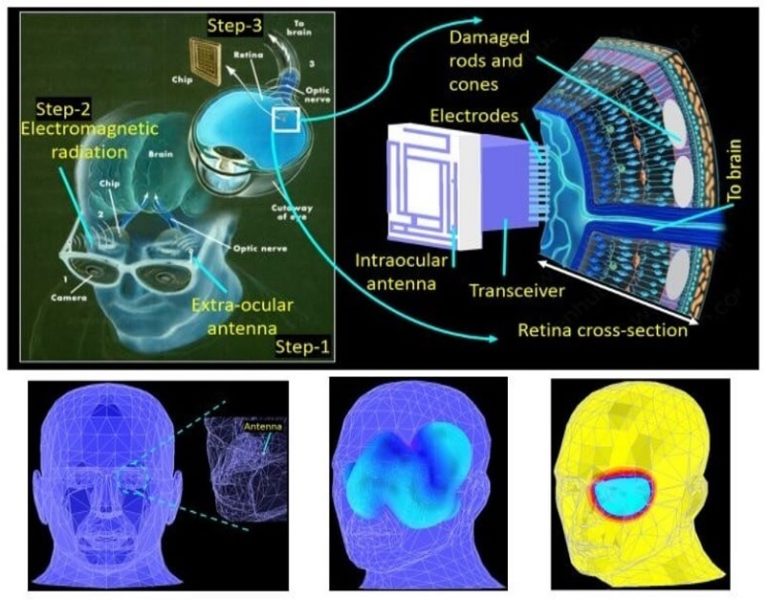An intraocular unit with an electrically small wire patch antenna is designed and experimentally validated for retinal prosthesis applications. Due to the smaller size of the proposed antenna, in comparison to the operating wavelength, its performance is close to the fundamental physical limits of electrically small antennas reported in the literature. The proposed antenna physical size is compatible to be fit in the SOC of Argus-II or Alpha-IMS. The wideband impedance characteristics of the antenna are sufficient to handle the extension of interfacing electrode capacity (multiple of 1000s) so that retinal neurons could deliver a current of 10 mA to improve image perception capability over a visual angle of more than 40˚. The circular polarization characteristics allow the extraocular antenna to be located anywhere on the eyeglasses. Near-field distribution with a low specific absorption rate validates that, in the case of antennas implanted in the eyeball, the majority of the energy confines only to the antenna location. A far-field pattern with comparatively high gain coupled power at different LOS angles from an external antenna suggests that if nulls are achieved in the broadside direction (at 45˚/90˚ with respect to the z-axis), then excessive heating of the most sensitive tissues at the back of the head and the front of the eyeball could be avoided.
Although the result obtained so far for the proposed intraocular antenna are first of its kind, future developments in areas such as packaging with a robust biocompatible layer and selection of the PCB substrate are required to facilitate antenna integration in an intraocular device.

